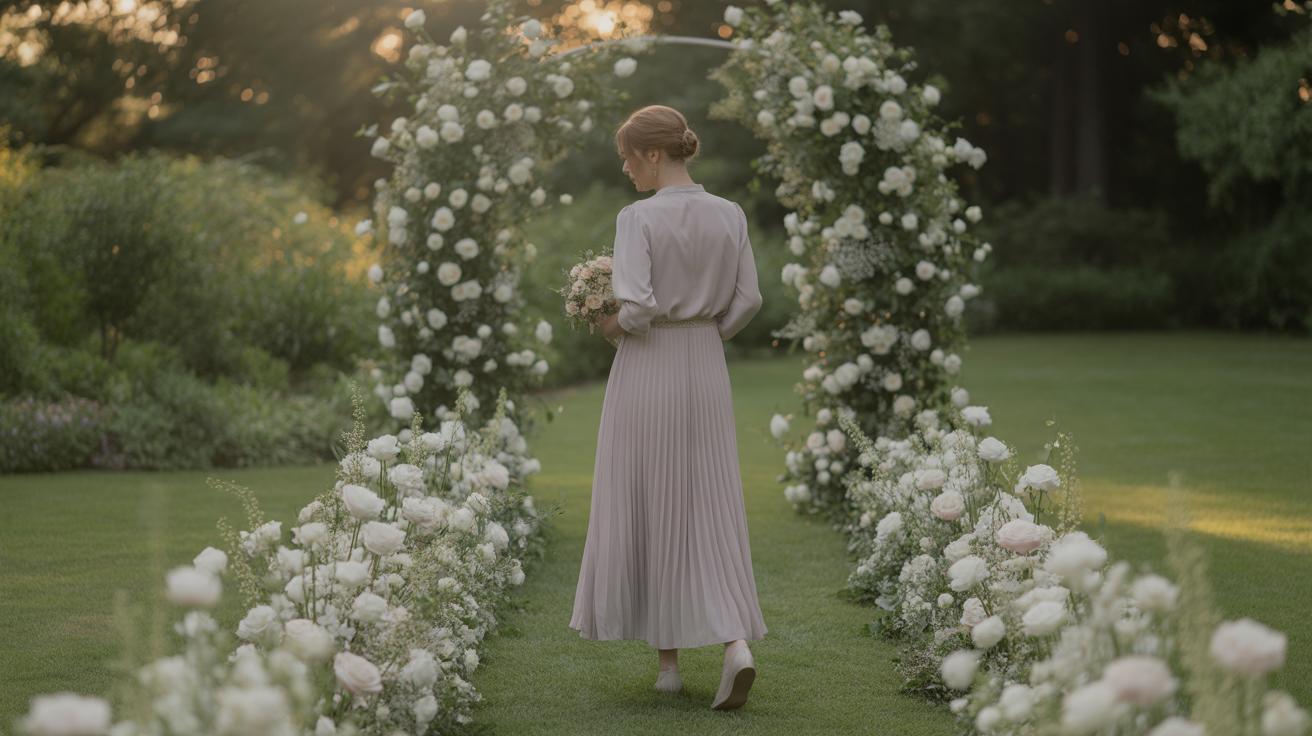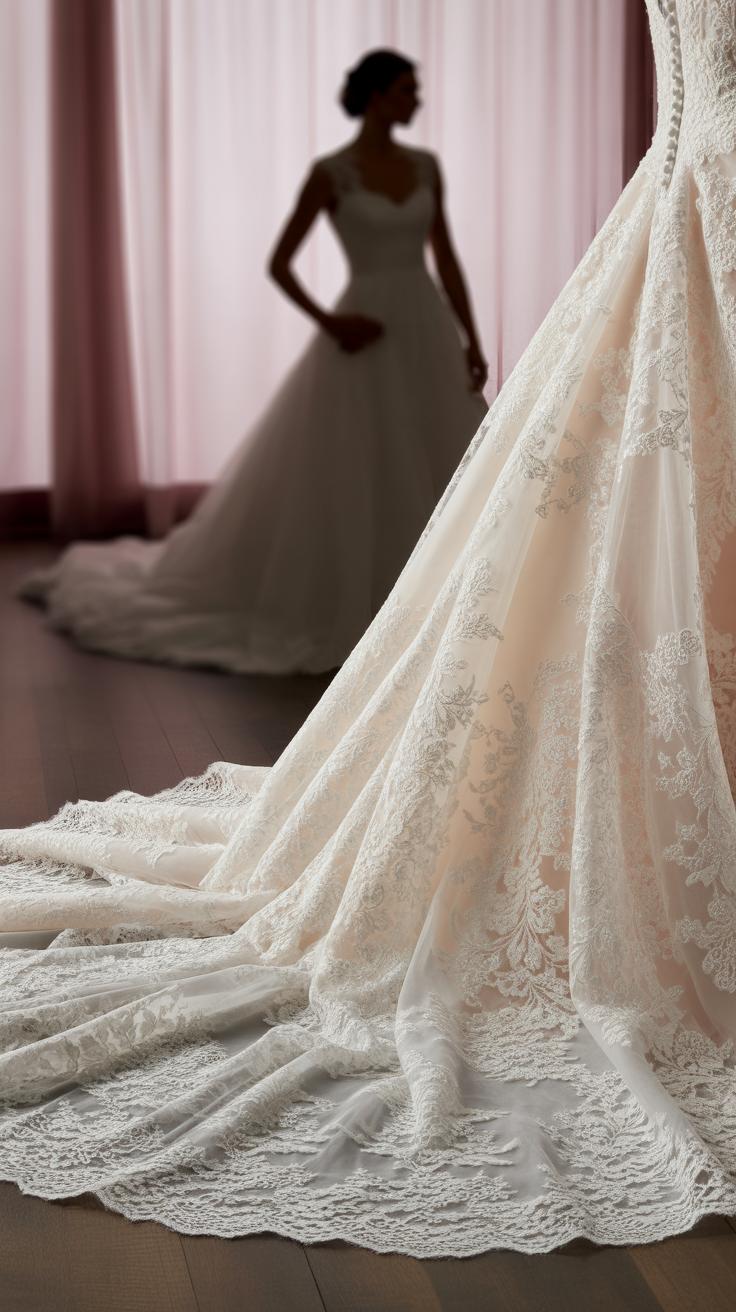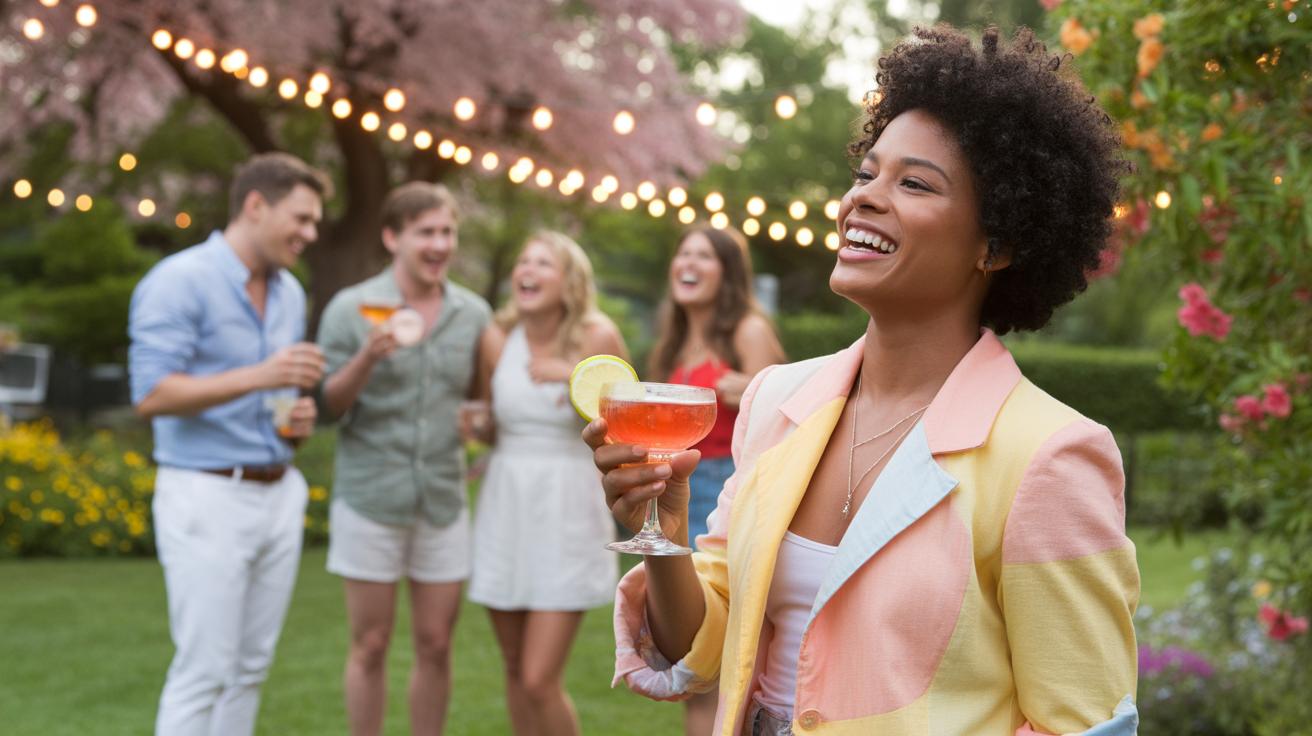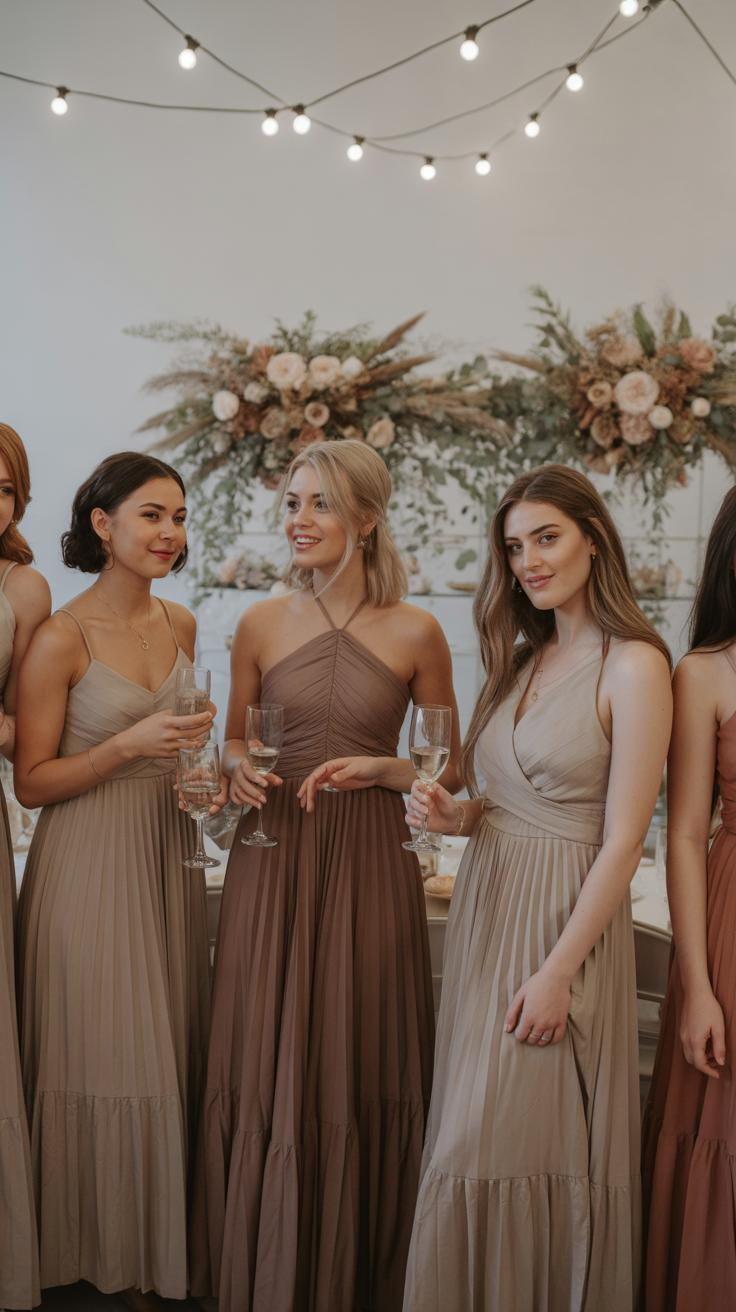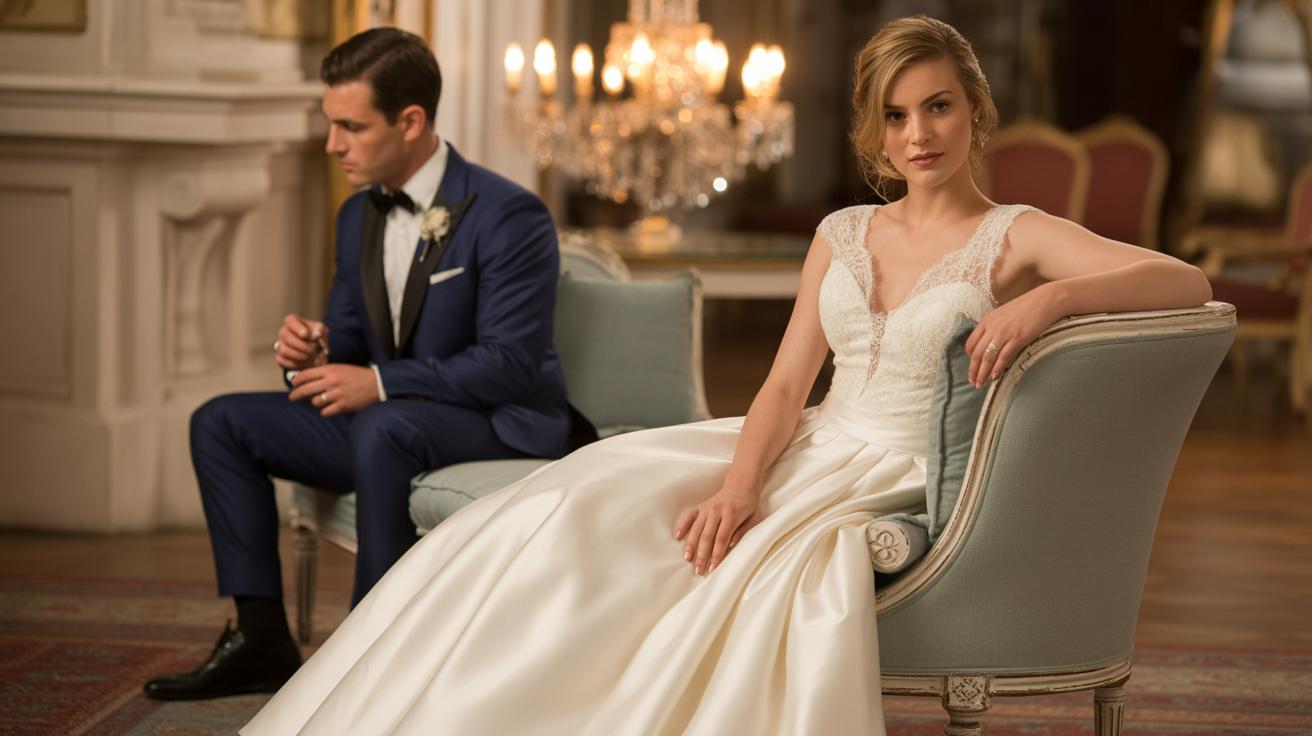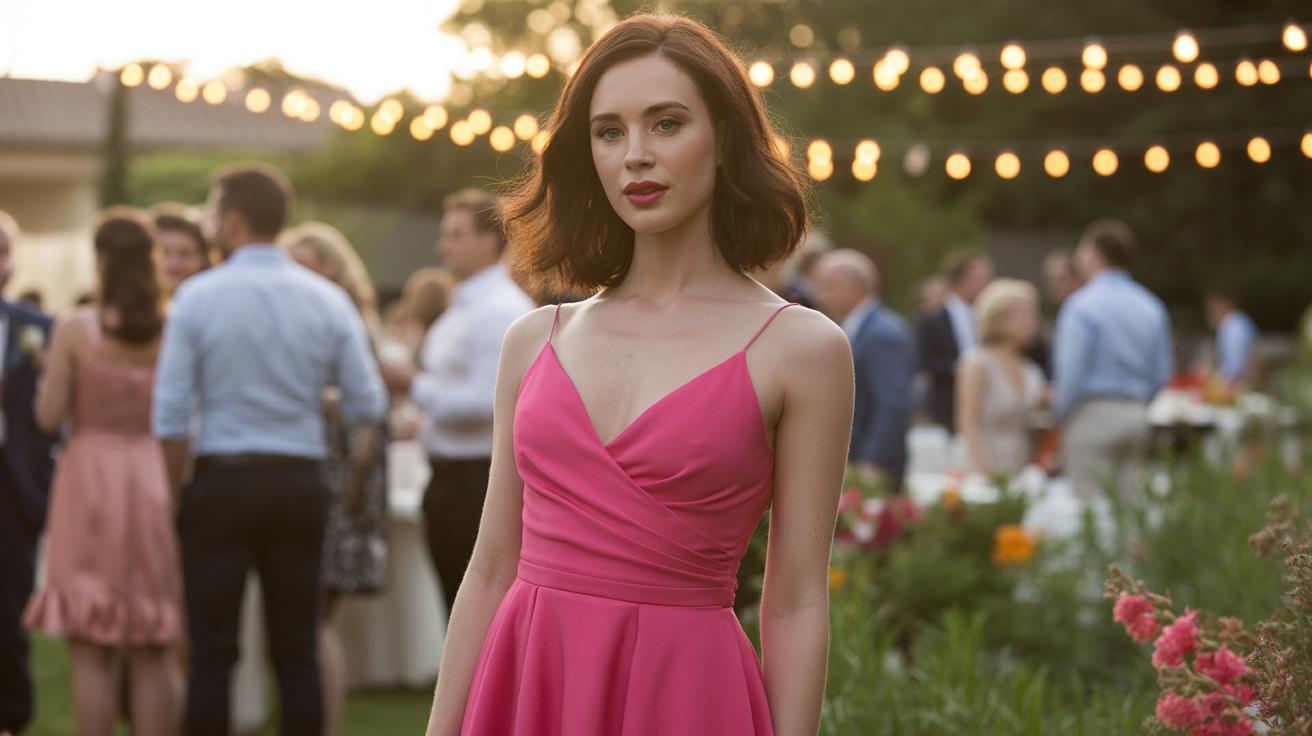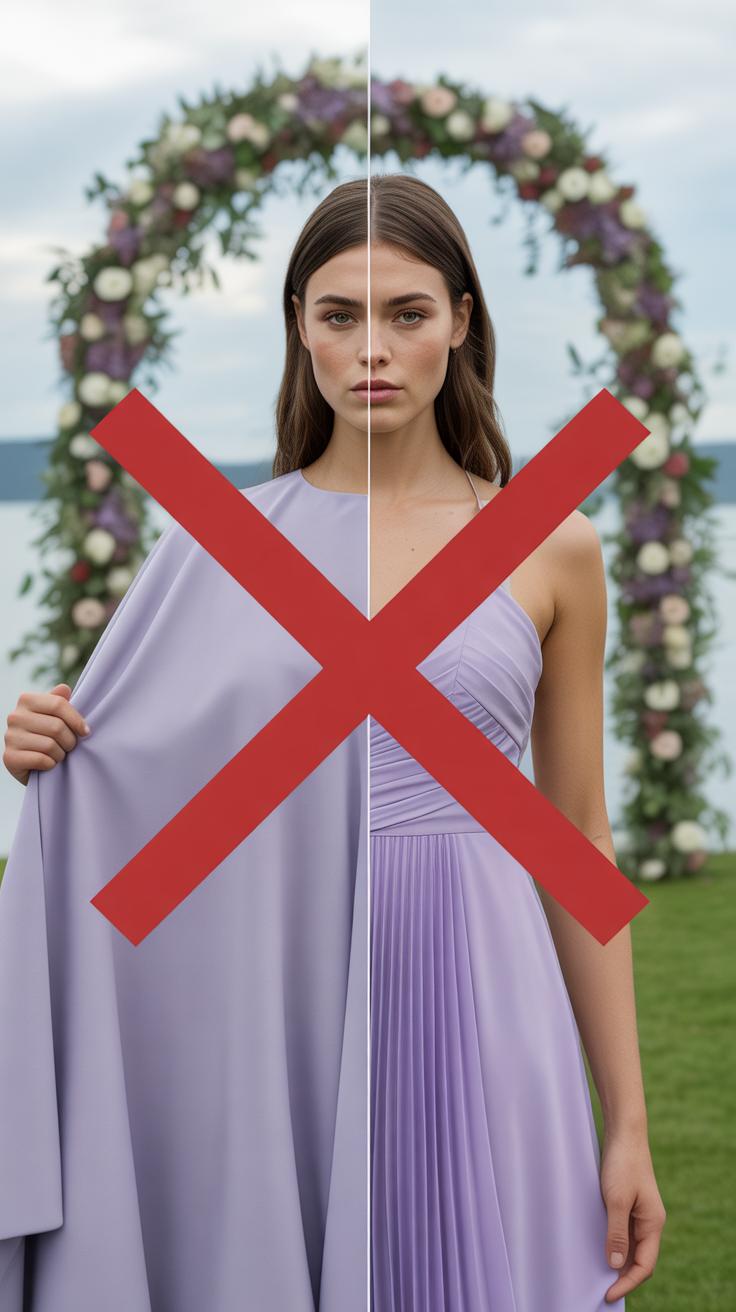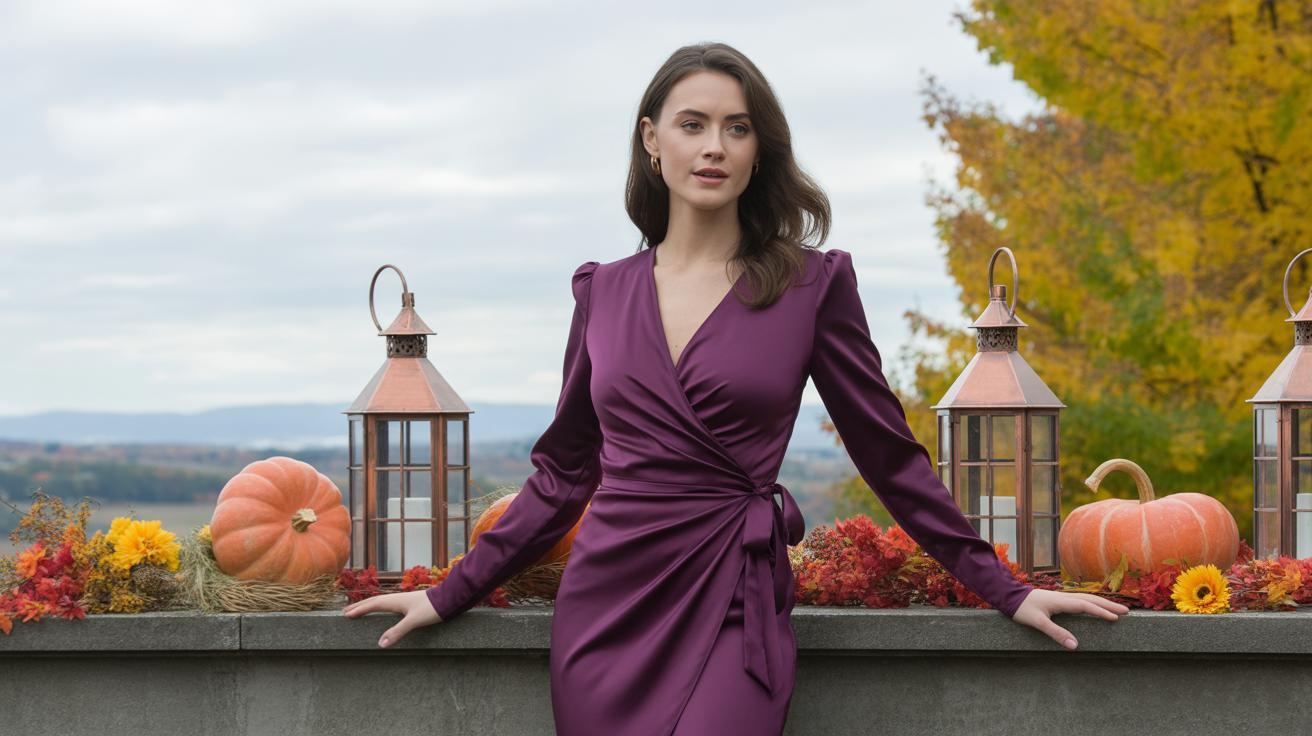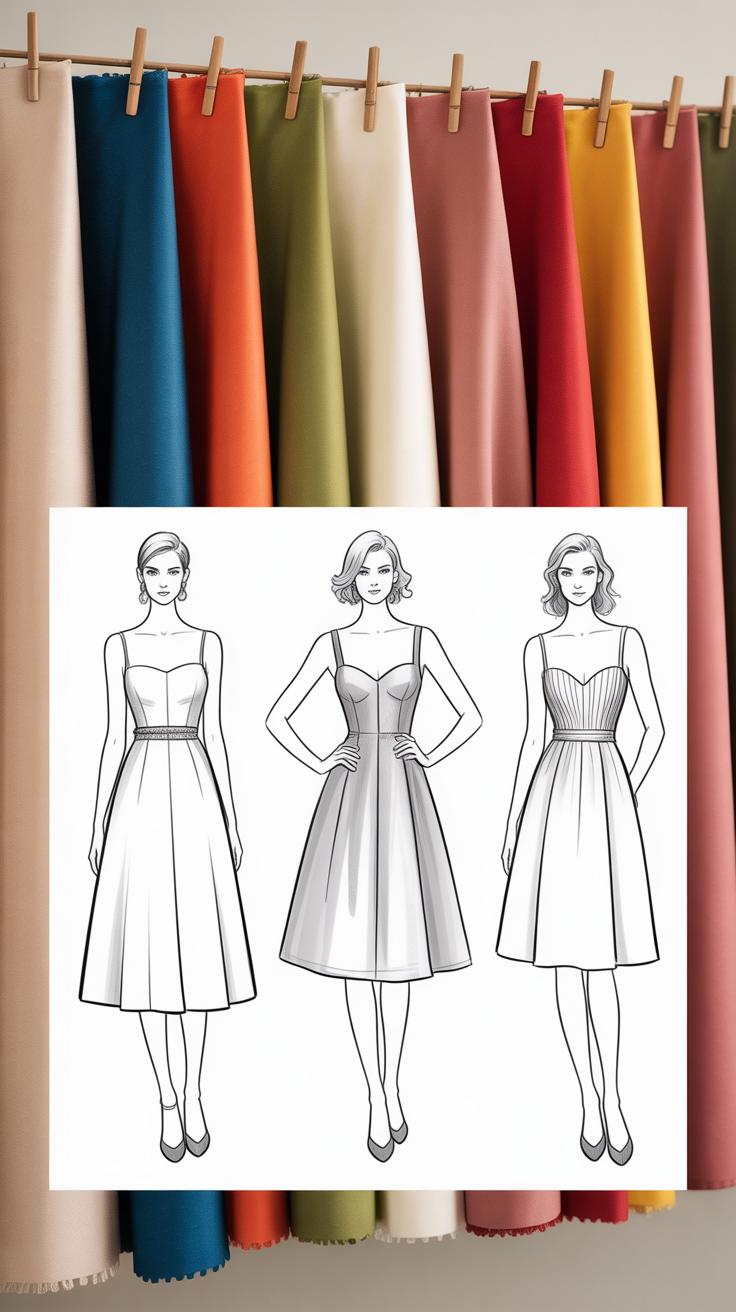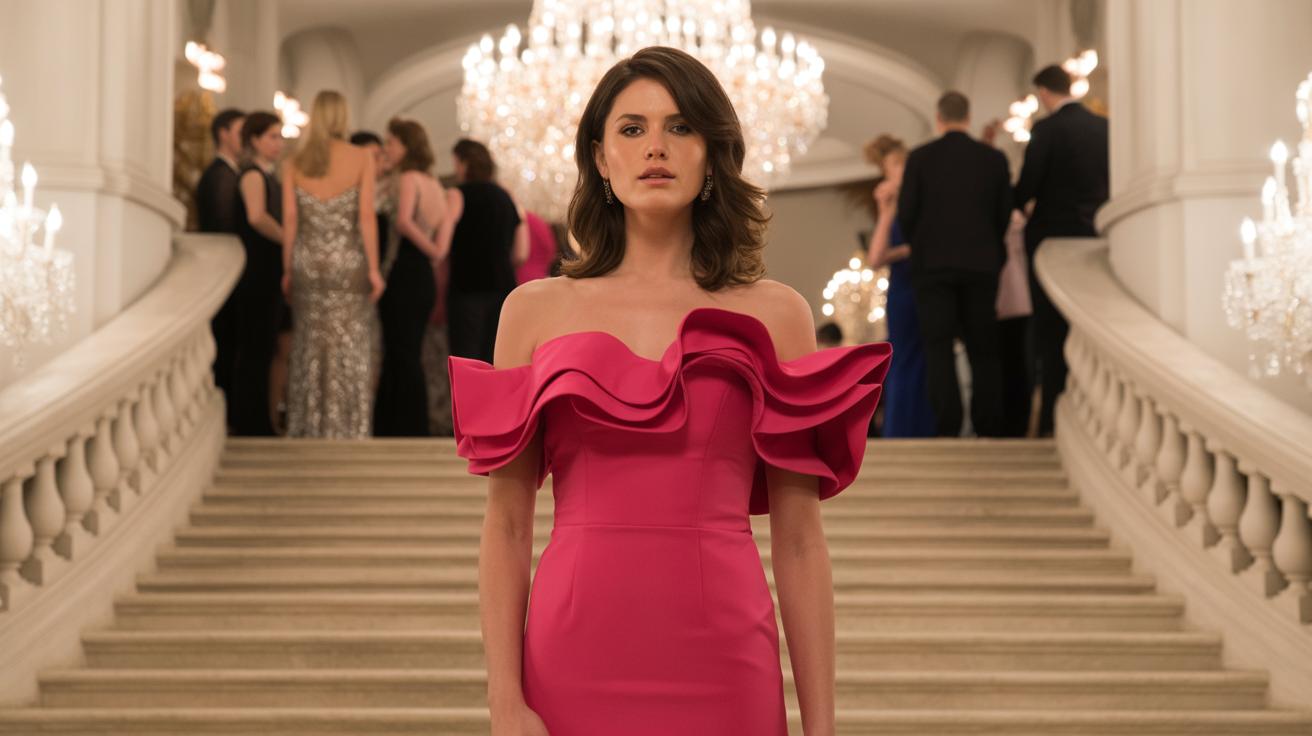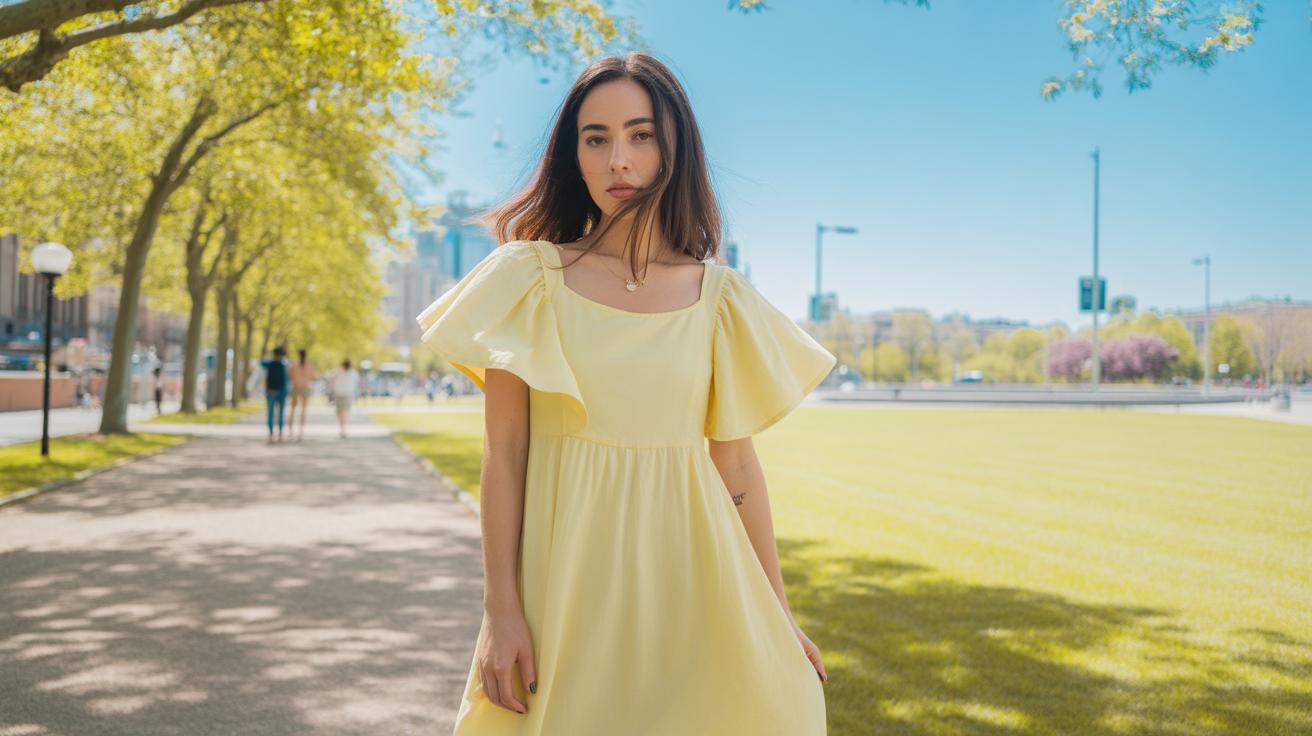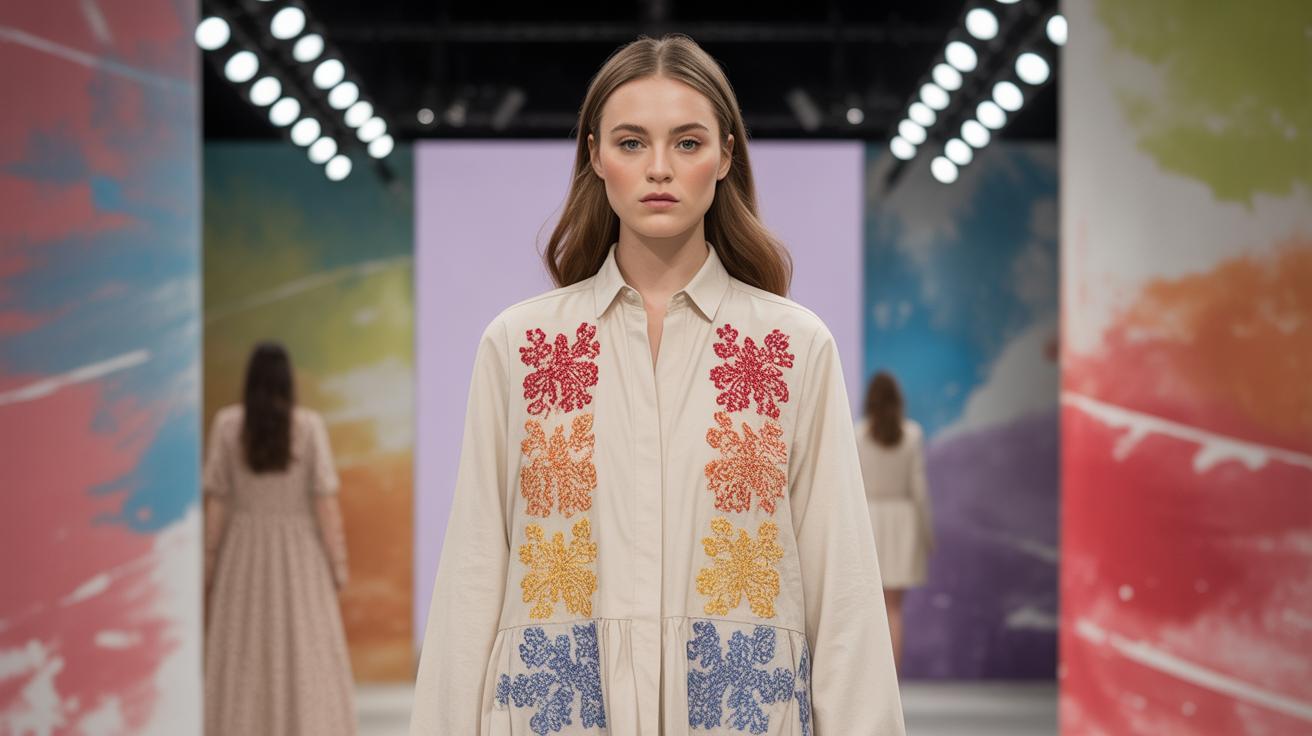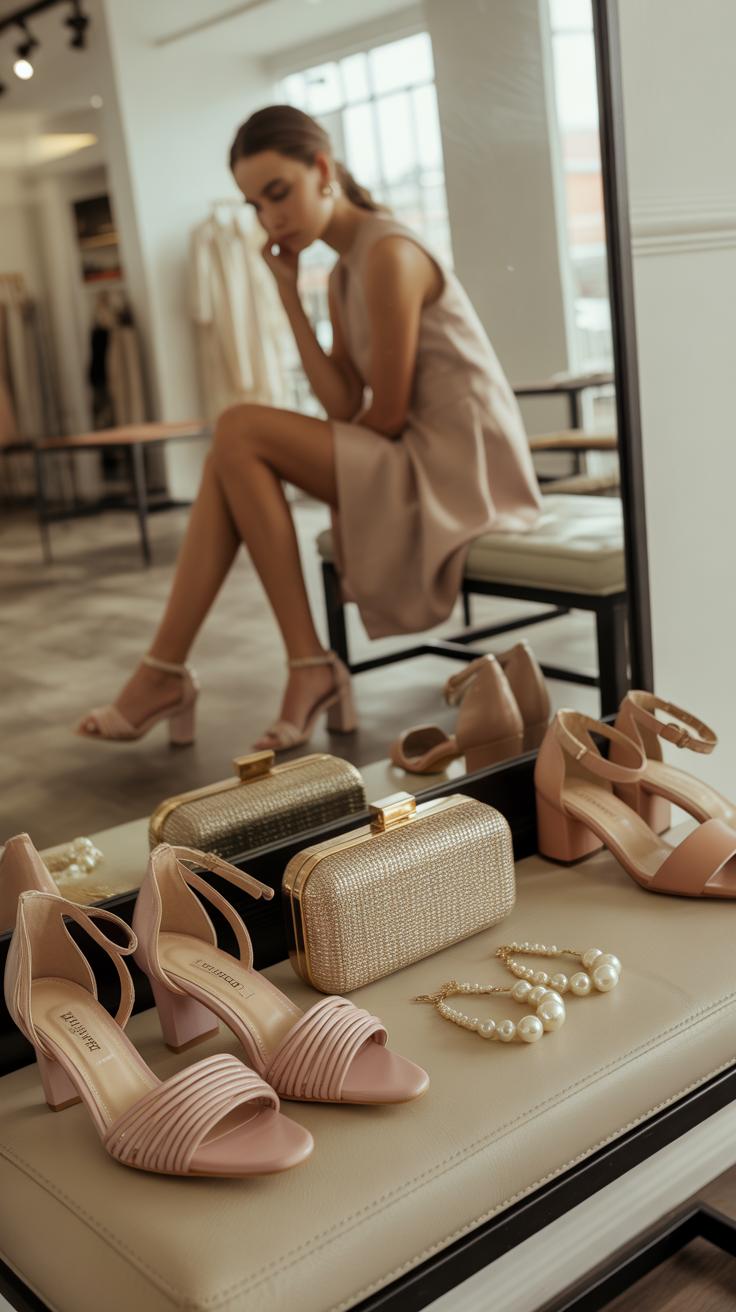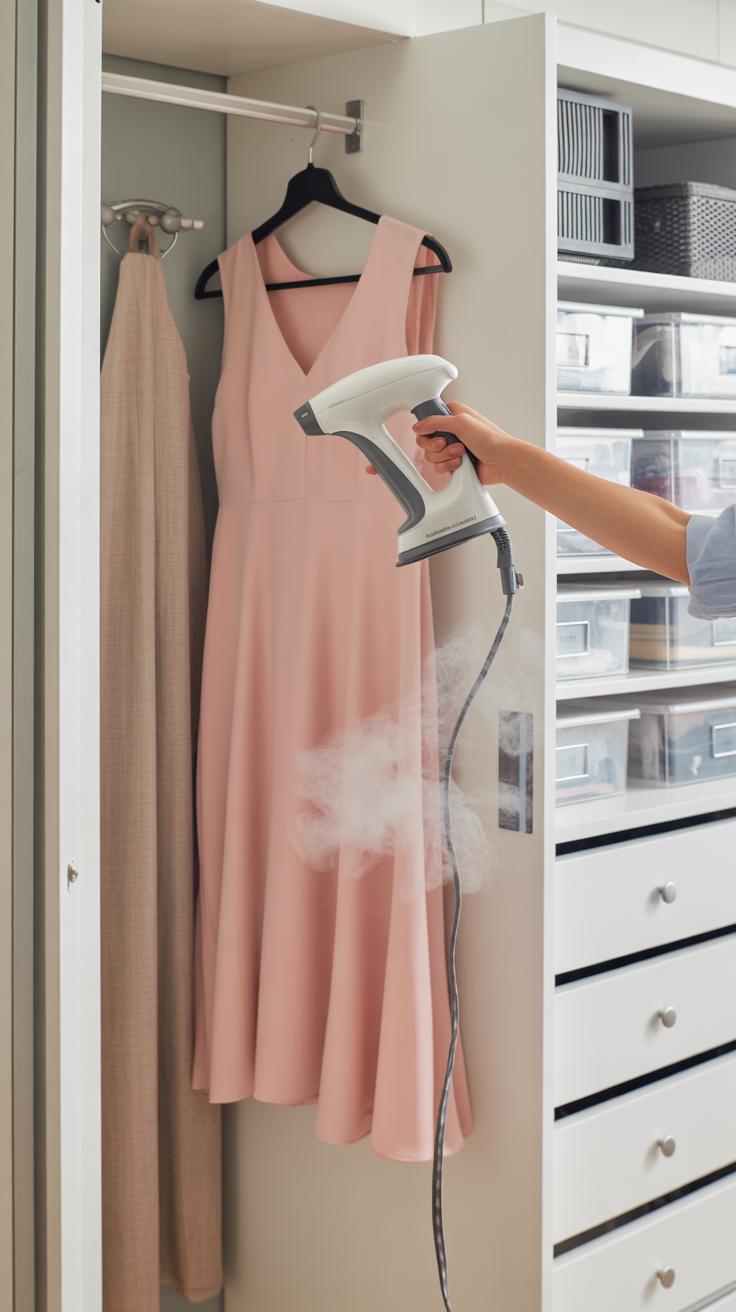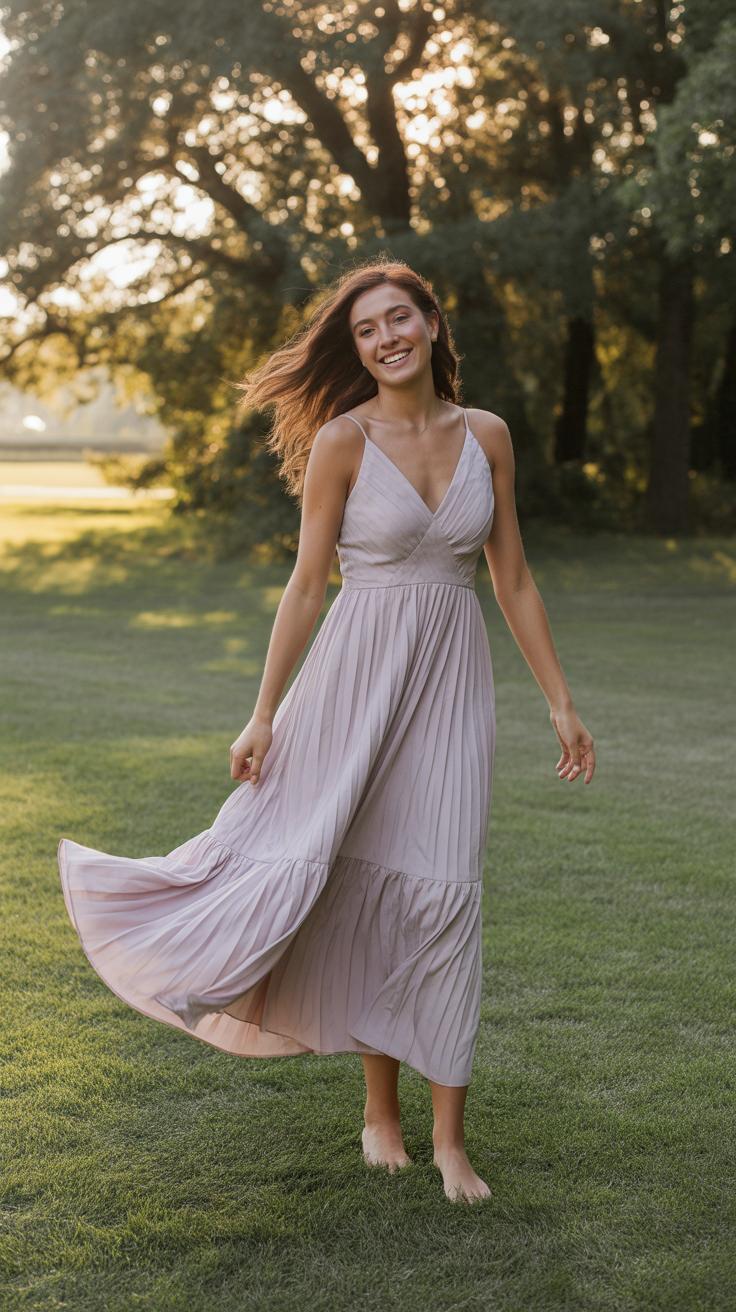Introduction
Attending a wedding means dressing in a way that celebrates the couple’s special day while acknowledging the importance of the event. You want to look good, but also need to choose a dress that respects the bride and the ceremony. Which styles fit this balance? How can you ensure your outfit is elegant without drawing focus away from the bride?
Wedding attire holds cultural and social significance. The bride’s dress often symbolizes tradition and personal expression. Guests play a supportive role, and your choice speaks volumes about your understanding of etiquette and respect. This article will guide you through the types of dresses suitable for weddings, tips for picking the right dress, and how to shine without overshadowing the bride.
Understanding Wedding Dress Importance
Wedding dresses carry deep cultural and emotional value. They symbolize important moments, like a bride’s new beginning and commitment. Throughout history, dresses have represented more than style—they reflect social status and personal identity.
In many Western traditions, the white wedding dress became popular in the 19th century, symbolizing purity and innocence. In contrast, Eastern cultures often use vibrant colors, such as red in China, which stands for happiness and good fortune.
Your choices as a guest should recognize that the bride’s dress speaks about her role and the cultural meaning behind the celebration. Understanding these meanings helps you respect the bride’s place while appreciating the significance of her attire.
Historical Significance of Wedding Dresses
Wedding dress styles have changed with history, often reflecting social and economic factors. Before Queen Victoria wore white in 1840, brides selected dresses in various colors. Victoria’s choice of white popularized the color among Western brides and linked it to wealth, since white fabric required careful maintenance.
Over time, the white dress became a symbol of purity and privilege. As the middle class grew, more brides could afford white gowns. Social status shaped dress styles, with lace and silk showing upper-class status, while simpler fabrics were common among lower classes.
Knowing this history helps you see why wedding dresses hold special meaning beyond fashion. This insight can guide your respect for tradition when choosing your outfit.
Cultural Meanings of Wedding Attire
Wedding colors and designs differ worldwide, carrying unique meanings. Western brides usually wear white to represent purity. Meanwhile, many Eastern brides choose red, a color tied to joy and luck. This contrast shows how culture influences wedding fashion.
In India, brides wear bright colors like red and gold to signal prosperity. Japanese weddings may include several changes of dress, each representing different traditions. These choices reveal values and beliefs within each culture.
Considering these differences can help you pick a dress that honors the bride’s culture. It also shows awareness of how dress plays a role in the wedding’s overall meaning.
Role of the Wedding Guest Dress
Your outfit as a wedding guest sets the mood and respects the event’s significance. The bride’s dress is the wedding’s centerpiece, so your dress should never take attention away from her. Choosing a stylish but subtle dress shows you understand your role and honor the couple’s special day.
Think about how your attire fits the venue and formality. A casual sundress suits a garden wedding but feels out of place at a black-tie event. Dresses that are too flashy or revealing might distract others and miss the tone.
Ask yourself: Does your dress blend with the celebration or steal the spotlight? Balancing your look involves selecting a dress that complements the occasion. When you do this well, your outfit contributes to a respectful and joyful atmosphere without competing with the bride.
Etiquette for Wedding Guest Attire
Follow these simple rules to stay appropriate and stylish:
- Do avoid white, ivory, or cream. These are reserved for the bride.
- Do match the dress to the wedding’s formality—long gowns for evening, knee-length for daytime.
- Do check the invitation for dress codes like cocktail or semi-formal and follow them closely.
- Don’t wear anything too short, tight, or revealing. Respect the seriousness of the event.
- Don’t pick overly loud patterns or bright neon colors.
- Do consider the season and venue—lighter fabrics and colors for summer, richer textures for winter.
These guidelines help you show respect and fit in without drawing unnecessary attention.
Maintaining Respect Through Your Dress
Your choice of dress communicates your respect for the couple and their families. Selecting a tasteful, understated dress shows you value their priorities and traditions. Wearing something competing with the bride’s outfit can appear rude, even if unintentional.
Try to complement the bride’s style rather than clash with it. For example, if the bride wears a classic dress, avoid overly trendy or extravagant choices. Think about the tone she sets and choose a dress that supports it.
Remember, respect through your dress means honoring the couple’s moment and helping all guests feel comfortable and focused on the celebration. Which dress will make you feel confident while showing your respect? That balance is the key to your perfect wedding guest look.
Colors to Choose and Avoid
Choosing the right color for your wedding guest dress helps you show respect while looking great. Avoid any shades that might be mistaken for the bride’s dress, such as white, ivory, or cream. These colors are traditionally reserved for the bride and may distract from her special look.
Colors can either help you blend into the background or stand out tastefully. Soft pastels, jewel tones, and muted shades often work well and create a polished appearance. Think about the season and venue when picking a color. For example, light blues or lavenders suit spring weddings, while deep greens or burgundy are fitting for fall.
Could a bold shade make you seem like you want attention? Consider whether your color choice helps you celebrate the couple without overpowering the day. Choosing appropriate colors balances your style with respect for the couple’s traditions and feelings.
Safe Color Options for Wedding Guests
When selecting a dress for a wedding, many guests choose colors that flatter a variety of skin tones and fit most wedding themes. Navy blue, soft pink, lavender, and sage green are popular choices that strike the right tone. These colors are elegant and not flashy.
Neutrals like taupe, blush, and light gray also work well and keep your look refined without competing with the bride. Wearing these safe colors helps you stay stylish and respectful. Your aim should be to complement the occasion, not distract from it.
Do you want your dress to highlight your presence without overshadowing the wedding party? Choosing from these color ranges is a smart way to achieve that balance.
Colors to Avoid at Weddings
Certain colors can send the wrong message or clash with cultural traditions during weddings. Bright red, for example, might seem bold but could be seen as overly attention-seeking or inappropriate in some cultures. Black often symbolizes mourning, so wearing all black can feel out of place unless the couple specifies otherwise.
Also, neon or extremely flashy colors tend to stand out too much and pull focus from the bride. Avoiding these colors helps maintain the event’s warmth and dignity. Consider how your color choice might be perceived by the hosts and other guests.
Have you thought about how color impacts the atmosphere? Skipping bright red or all black can prevent misunderstanding and keeps your dress aligned with the wedding’s tone and traditions.
Selecting the Dress Style
Choosing the right dress style for a wedding requires attention to the event’s tone. Formal weddings invite polished silhouettes like sheath or floor-length gowns. These styles offer elegance without overshadowing the bride.
Semi-formal occasions allow for A-line or tea-length dresses. These outfits provide charm and comfort. They suit cocktail parties and afternoon ceremonies well.
Casual weddings often call for simple, relaxed pieces. Maxi dresses made of light fabrics work well outdoors. Avoid anything overly flashy but aim for neat and stylish.
Think about fabric choices too. Satin and chiffon suit formal events. Cotton, linen, and light blends are perfect for casual or summer weddings.
Ask yourself: does your dress fit the wedding’s mood without grabbing excessive attention? That balance ensures respect and style coexist beautifully.
Classic Styles for Different Wedding Types
Formal weddings favor streamlined styles like sheath dresses. These hug the body and create a refined look. Complemented by subtle details, they keep your appearance graceful.
Semi-formal weddings work well with A-line shapes. This silhouette flatters many figures by gently flowing out from the waist. Tea-length dresses add a vintage flair without demanding too much notice.
Casual weddings provide room for maxi dresses. They bring airflow and ease but can still look put-together with the right cuts and prints. Knee-length dresses in soft fabrics fit this category too.
Choosing the right silhouette helps you match the wedding’s formality without distracting the bride. Which style feels comfortable and appropriate for your next invitation?
Seasonal and Venue Considerations
Outdoor summer weddings call for breathable fabrics like cotton or linen. A-line midi or flowy maxi dresses offer comfort and style under the sun.
Indoor winter celebrations warrant thicker fabrics such as velvet or wool blends. Long sleeves and tea-length dresses add warmth while maintaining sophistication.
Venues influence your dress choice too. A beach ceremony suits lighter, casual dresses. A church or ballroom favors refined, classic cuts.
Consider the weather and location to avoid discomfort. Imagine attending dressed right for the season and spot—a smart decision that keeps you confident and respectful.
Accessories and Footwear Choices
Completing your wedding guest outfit depends heavily on the right accessories and shoes. These pieces should enhance your look without stealing the spotlight from the bride. When picking jewelry, aim for simple designs like small studs, thin chains, or delicate bracelets. Subtle pieces add a hint of shine without overwhelming your dress.
Your bag should be just big enough for essentials like your phone and lipstick. Choose a modest clutch or a small crossbody in neutral colors. Avoid bags with loud logos or excessive decoration that may clash with your outfit.
Footwear that fits the occasion balances elegance and comfort. Think about whether the wedding involves a lot of standing or dancing. Low-heeled pumps or block heels often work well. If you expect to walk on grass or uneven surfaces, closed-toe flats or wedges can be practical and stylish.
Match your shoes’ formality with your dress style. For a delicate dress, choose sleek heels. For a casual or outdoor event, simpler shoes feel right. Always ask yourself: Can I stay comfortable all day without drawing too much attention? That question ensures your choices respect both tradition and style.
Choosing the Right Accessories
Your accessories should support your dress without competing with it. Pick jewelry that complements your outfit’s color and style. For instance, if your dress has bold prints, avoid flashy earrings or thick necklaces. Instead, wear thin gold or silver pieces that quietly lift your look.
Choose purses that match the tone of the event. A small clutch in leather or fabric works well for formal ceremonies. At casual venues, a neat crossbody bag adds convenience without stealing the scene. Skip oversized or highly decorative bags that might distract attention from your dress.
Think about the size and weight of your accessories. Light, neat pieces allow you to feel comfortable during the long day. When selecting bracelets or rings, pick subtle designs with smooth edges that won’t catch on your dress or bother your hands while greeting others.
Footwear That Fits the Occasion
Selecting shoes for a wedding means balancing style and comfort. High heels may look elegant but can cause discomfort during extended periods. Choose mid-height heels or wedges for better balance, especially if you expect much walking or dancing.
Consider the venue’s surface. Soft grass or sandy beaches call for firm soles or wedge styles to avoid sinking or tripping. Indoor venues with smooth floors allow you to wear classic pumps or even stylish flats.
Don’t forget to break in new shoes before the event to prevent blisters. You might also carry a pair of elegant flats for later in the day. This combination lets you start with polish and finish with ease, keeping you both stylish and comfortable.
Dressing for Different Wedding Themes
The wedding theme helps decide what you should wear. It guides the style, color, and even fabric choice for your dress. Rustic weddings often call for simple, natural-looking dresses, like cotton or linen, in soft earthy tones. These settings usually take place outdoors, so comfort matters.
Beach weddings encourage lighter, flowy dresses in bright or pastel colors. Think chiffon or light silk that moves with the sea breeze. You want to stay cool and look elegant without appearing too formal.
Vintage-themed weddings give you the chance to wear classic styles, like tea-length dresses or lace details. Colors might lean towards muted or jewel tones. You can match the old-fashioned charm without outshining the bride by choosing subtle patterns and avoiding overly flashy designs.
Black-tie weddings require formal gowns. Opt for long dresses in solid, rich colors like navy, burgundy, or emerald. The key is to look polished and elegant, but not too bold. Avoid all-white or overly shiny fabrics.
Matching Your Dress to the Wedding Theme
Think about the wedding setting when selecting your dress. For a rustic wedding in a barn, a soft floral dress in warm tones fits perfectly. If invited to a beach ceremony, a light coral or seafoam dress complements the water and sand.
Vintage weddings open the door to different eras. For a 1920s theme, try a drop-waist dress in cream or pastel shades. If it’s a garden wedding with a vintage feel, a muted green or lavender dress would blend well.
At black-tie affairs, simple and strong colors work best. A deep red or royal blue gown pairs nicely with a classic venue like a ballroom. Avoid colors that resemble the bridal party’s attire or the bride’s gown to keep harmony intact.
Theme-Specific Tips and Ideas
Accessories should complete your look according to the theme. For rustic weddings, wooden or leather bracelets and simple earrings add charm without stealing attention. Soft waves in your hair or a low bun feel appropriate.
At beach weddings, sandals or barefoot sandals work. Add a sunhat or delicate shell jewelry to enhance the seaside vibe without going overboard.
Vintage weddings let you play with hairstyles like finger waves or pin curls. Pearl or lace gloves, along with a clutch purse, help you stay true to the era. Choose delicate fabrics that echo the theme’s softness.
In black-tie settings, select elegant heels and a small, classic clutch. Minimalist gold or silver jewelry keeps your style sleek. Hair styled in an updo or smooth blowout will suit the formal tone and keep the focus balanced between you and the bride.
Avoiding Common Dress Mistakes
Common Pitfalls in Wedding Guest Dressing
Choosing the wrong dress can disrupt the mood of the wedding. Wearing white, for example, often draws attention away from the bride, who traditionally wears white. Selecting white can confuse guests or make the bride feel overshadowed. Another mistake is showing up in casual clothing at a formal wedding. This makes you stand out for the wrong reasons and shows a lack of respect for the event’s tone. Dresses that are too flashy or revealing can also steal the spotlight. Think about whether your outfit fits the wedding’s formality and setting. Reflect on how your dress might appear to the couple and other guests before deciding what to wear.
How to Choose Dresses Mindfully
Explore details about the wedding before picking your dress. Check the invitation or wedding website for a dress code. Often hosts will specify if the event is casual, semi-formal, or black-tie. Understanding this helps you find a dress that fits the occasion. Consider the culture and traditions involved so your outfit respects those values. Ask yourself if your dress will blend well with the wedding party without competing for attention. Look for colors and styles that complement the overall theme. This research prevents mistakes and helps you choose a dress that honors the bride and the day.
Caring for Your Wedding Guest Dress
Taking good care of your wedding guest dress helps you keep it looking fresh for future occasions. After the event, check your dress carefully for any stains or damage. Treat stains quickly by blotting gently with water or a mild detergent. If the fabric is delicate, consider taking it to a professional cleaner experienced with formal wear. Some dresses require dry cleaning, while others can be hand washed at home—read the care label to decide the best method.
When storing your dress, choose a cool, dry place. Use a breathable garment bag instead of plastic to prevent moisture buildup. Hang your dress on a padded hanger to keep its shape and avoid stretching the fabric. If the dress has embellishments, store it flat or carefully fold it with tissue paper to protect these details.
Cleaning and Storing Your Dress
You should clean your dress soon after the wedding to avoid set-in stains or odors. For most fabrics, professional dry cleaning works best, especially for silk, satin, or delicate beadwork. When washing at home, use cold water and a gentle detergent. Avoid wringing or twisting the fabric to prevent damage.
After cleaning, make sure the dress is completely dry before storing it. Store your dress away from direct sunlight to avoid fading. If possible, keep it in a garment bag that allows air to circulate. Fold dresses with hard embellishments carefully and use acid-free tissue paper to maintain shape and protect fabric.
Maximizing Dress Longevity
Think about how you can change your dress to wear it to other events. Adding a belt, scarf, or statement jewelry can create a fresh look without buying new clothes. Try layering with a jacket or cardigan for a different style.
Simple alterations like adjusting the length or adding sleeves can make a dress work for multiple occasions. Sometimes, changing your shoes or hairstyle can transform the outfit entirely. How could you update your dress to fit different settings? Planning these adjustments will help you wear your dress more than once and make your investment last.
Confidence and Comfort On Your Wedding Day
Your dress sets the tone for how you feel at the wedding. When you choose an outfit that fits your style and body well, your confidence naturally grows. Confidence helps you enjoy every moment, whether you’re chatting with friends or hitting the dance floor. Think about how your mood shifts when you feel good in what you wear. That boost can make the day more fun and less stressful.
Comfort goes hand in hand with confidence. If your dress allows you to move freely and breathe easily, you’ll focus more on the celebration than on adjusting your clothes. What is better: looking great but feeling uneasy, or feeling at ease and glowing? Opt for balance so you can feel sure of yourself without distractions.
Choosing Dresses That Fit Well
Picking a dress that fits your body shape makes a big difference. A dress that is too tight or too loose can hurt your confidence. Look for styles that highlight your best features while giving you room to move. If the dress is close to perfect but not quite there, consider simple tailoring. Small changes to the hem, waist, or sleeves can upgrade your outfit and help you feel more comfortable.
Knowing your measurements is helpful before shopping. This avoids common fit issues and lets you find a dress that suits you better. Can you think of a time when adjusting a dress made you feel more put together? Tailoring is often a small step with a big impact.
Balancing Style With Comfort
Fabric choice affects how comfortable your dress feels. Natural materials like cotton, silk, or linen breathe well and keep you cool. Avoid stiff fabrics or anything that scratches your skin. Look at dress designs with these facts in mind: loose skirts, adjustable straps, or soft lining make a huge difference for comfort.
Shoes matter too. Pick footwear that supports your feet and matches your outfit. Flats, block heels, or cushioned sandals reduce discomfort over hours. Ask yourself: Will I be able to stand, walk, and dance all day in these shoes? Style works best when it doesn’t cause pain or distraction.
When you match style and comfort, the whole wedding experience feels better. This lets you focus on the moments that matter, without fussing about your outfit.
Conclusions
Your dress choice for a wedding matters because it respects the event, the couple, and the guests. By focusing on style choices that complement rather than compete with the bride, you demonstrate etiquette and consideration. Color choice, dress style, and the formality level must align with the wedding theme and cultural context. Taking time to understand these factors makes your decision easier and more thoughtful.
Choosing an appropriate wedding guest dress also means embracing your own style within respectful boundaries. Always ask, does this dress suit the time, place, and tone of the wedding? Remember that simple, elegant designs in subtle colors are best when uncertain. Dressing for a wedding is about support, joy, and harmony — your outfit should reflect that aim while allowing you to enjoy the celebration in confidence and comfort.


